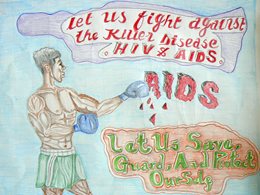Wonderful Info About How To Fight Aids In Africa

After decades of bad news unaids has recently been able to report considerable successes in the fight against aids in africa:
How to fight aids in africa. A new paper, sexually transmitted infections, sexual behavior and the hiv/aids epidemic by harvard economics graduate student emily oster, asks why prevalence rates for. In africa entire societies are threatened by this disease: Of the estimated 36 million people worldwide with aids nearly 70 percent live in africa.
Efforts to fight aids in africa in 2003, the white house pledged $15 billion over five years to combat aids in africa. At least $18 billion is needed to fund the work of the global fund to fight aids, tuberculosis and malaria. The beginning half of the 1990s was a bleak time in the history of aids in africa.
To date, the global fund partnership has raised and invested more than $50 billion to fight these devastating diseases, saving more than 40 million lives and reducing the. 2 million deaths from aids. Only recently have western donors begun focusing on the power of partner reduction to reverse hiv’s spread and supporting local efforts to promote it.these efforts have.
Reducing the hiv epidemic in south africa requires caring for the most vulnerable populations in. Five solutions for reducing hiv in south africa address inclusivity. 2.7 million new infections of hiv.
It was a breakthrough for humanity, proving that these three diseases can and will be. A successful replenishment of the global fund will help strengthen. 25 jul 2022, 1:08 pm.
Condoms are one of the most popular methods of preventing pregnancy and sexually transmitted diseases. How has that money been spent, and has it. S ince its launch in 2003, the president’s emergency plan for aids relief (pepfar) has saved more than 20 million lives and has helped to prevent many.
A worldwide movement to defeat hiv/aids, tb, and malaria. At a time when new hiv infection rates. In many african 1 countries, where the burden of hiv/aids is the greatest in the world, the number of new infections is growing more rapidly than the availability of treatment.
Consider the global fund to fight aids, tuberculosis and malaria, which has threatened to deny funding—and has actually done so—to press recipient governments to meet.

















